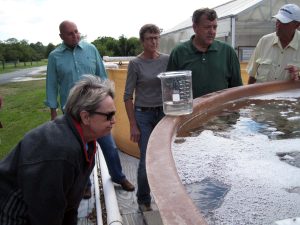
Workforce Development: Oyster Farmers Get a Leg Up in the Business
Maryland Sea Grant Extension Helps Shellfish Growers Produce Oyster Seed
Scroll down to view posts

Maryland Sea Grant Extension Helps Shellfish Growers Produce Oyster Seed
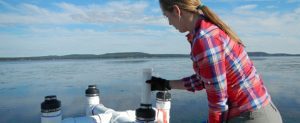
A blog written by and about fellows funded by Maryland Sea Grant provides valuable experience in communicating about science.
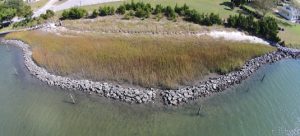
In the spirit of the collaborative nature of NOAA's Sentinal Site Program, Sea Grant provides coordinators to foster relationships among the various partners studying sea level rise and addressing community resilience.
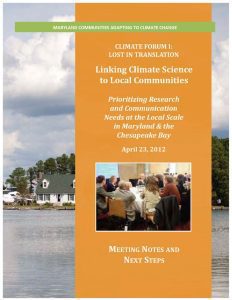
Scientists in Maryland have published numerous studies on the impacts of climate change on the Mid-Atlantic region, but communicating the results of that research has proved difficult. Many residents in the state’s coastal communities lack a good understanding of the risks that climate change and sea level rise in particular pose to their way of life. In 2012, Maryland Sea Grant held a statewide climate change forum to inform efforts to share and discuss the findings of climate science with these communities.
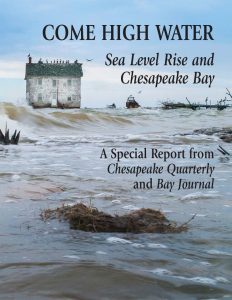
Along much of the Mid-Atlantic coast, sea levels are rising faster than the global average. This trend has already been linked to intensifying storm surges, shoreline erosion, and the loss of wetlands in the Chesapeake Bay region. To educate residents of Maryland about the impacts of sea level rise and climate change in the Chesapeake region, Maryland Sea Grant formed a unique partnership with the regional news magazine, Bay Journal. This partnership resulted in a special issue of Maryland Sea Grant’s magazine, Chesapeake Quarterly, that was published in October 2014 and titled “Come High Water: Sea Level Rise and Chesapeake Bay.”

Many leaders in Maryland have highlighted the importance of developing oyster aquaculture in the state: this industry supports local working waterfronts and also helps the state’s struggling seafood industry. Maryland Sea Grant Extension helped to bring about changes in state policy to make it easier for residents to obtain leases for aquaculture operations in Chesapeake Bay, creating new opportunities for entrepreneurs. To help them pursue those opportunities, Maryland Sea Grant Extension and its partners have developed a number of programs that help shellfish growers to obtain start-up funding for these ventures and to build and operate them successfully.
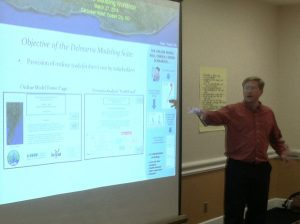
Maryland Sea Grant supported a research project to develop a Nutrient Loading Model for the Delmarva Peninsula. Other collaborators and funders on the effort included Sea Grant programs in Delaware and Virginia.
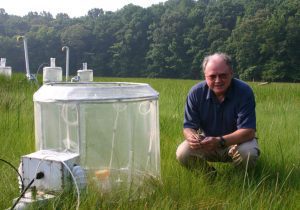
Maryland’s coastal wetlands provide diverse ecosystem services for the Chesapeake Bay region, reduce flooding risks, and help to improve local water quality. These natural communities, however, also face threats from rising sea levels and invasive species. Of particular concern is the non-native reed Phragmites australis, which has displaced native marsh grasses in many Mid-Atlantic wetlands in recent decades. To inform the management of this invasive reed, Maryland Sea Grant funded research to better understand how climate change might affect the growth of Phragmites populations around Chesapeake Bay.
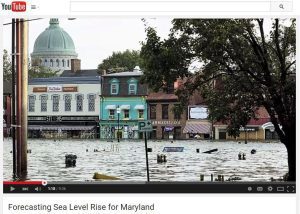
Maryland Sea Grant produced a nine-minute online video documentary that describes scientific research about the causes of rising seas in the Chesapeake Bay region.
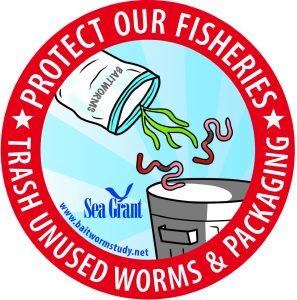
The introduction of aquatic invasive species to Chesapeake Bay, transported through the ballast water of cargo ships or by live animal and plant trades, can bring ecologically harmful consequences. To safeguard local ecosystems, Maryland Sea Grant supports programs that seek to prevent the establishment of new invasive species in the region.
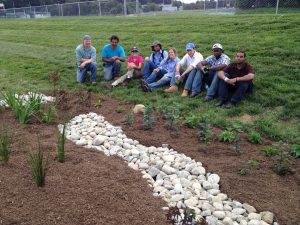
Maryland and other states in the Chesapeake Bay watershed are currently engaged in a multi-billion dollar effort to improve water quality by meeting Total Maximum Daily Load (TMDL) targets for nutrients and sediments. To accomplish this, municipalities around the region need help from trained and dedicated volunteers who can implement watershed restoration practices. Such practices include stormwater management tools like rain gardens and barrels.
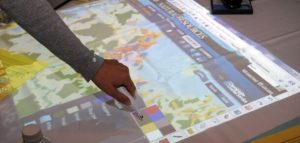
With support and training from Texas Sea Grant, Maryland Sea Grant Extension employs the weTable tool to facilitate decision-making processes in a range of communities.
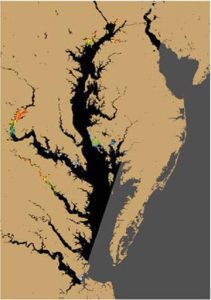
In May 2014, Maryland Sea Grant, in partnership with the NOAA National Centers for Coastal Ocean Science (NCCOS), held a workshop to explore the use of remote sensing for detecting harmful algal blooms in the Chesapeake Bay region.

” Since I didn't have a marine science or oceanography background, the Sea Grant Knauss fellowship opened the door for me at NOAA and within policy. It can also do this for others.”
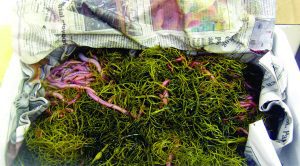
To reduce the spread of aquatic invasive species, a project led by Maryland Sea Grant educated fishers to properly dispose of the seaweed packaging used to ship blood worms.
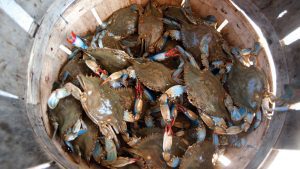
The Chesapeake Bay’s renowned blue crab fishery could support a larger harvest and higher revenues for fishermen if regulators extended protections for mature female crabs, a new study funded by Maryland Sea Grant says.

Maryland Sea Grant researchers identify and map previously unrecorded Maryland streams. The additional detail is expected to inform conservation and development projects statewide.
Scientists release new projections for future sea level rise for the Chesapeake Bay and for Maryland, Virginia and nearby Mid-Atlantic coastal areas. In these, regions sea levels are rising faster than the global average, the result of subsiding lands, a slowing Gulf Stream and melting land ice in Antarctica.
For more information on this study see Maryland Sea Grant
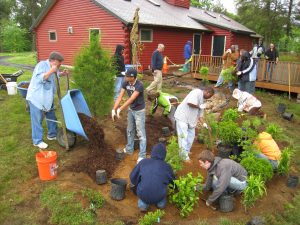
Rain Garden, a new free iPhone app, guides users on how to create and install rain gardens that curtail runoff of pollutants, prevent erosion, and provide wildlife habitat. Development of the app was funded by the NOAA Sea Grant Climate Change Adaptation Capacity Building Initiative and developed by Connecticut Sea Grant and the University of Connecticut Center for Land Use Education and Research.